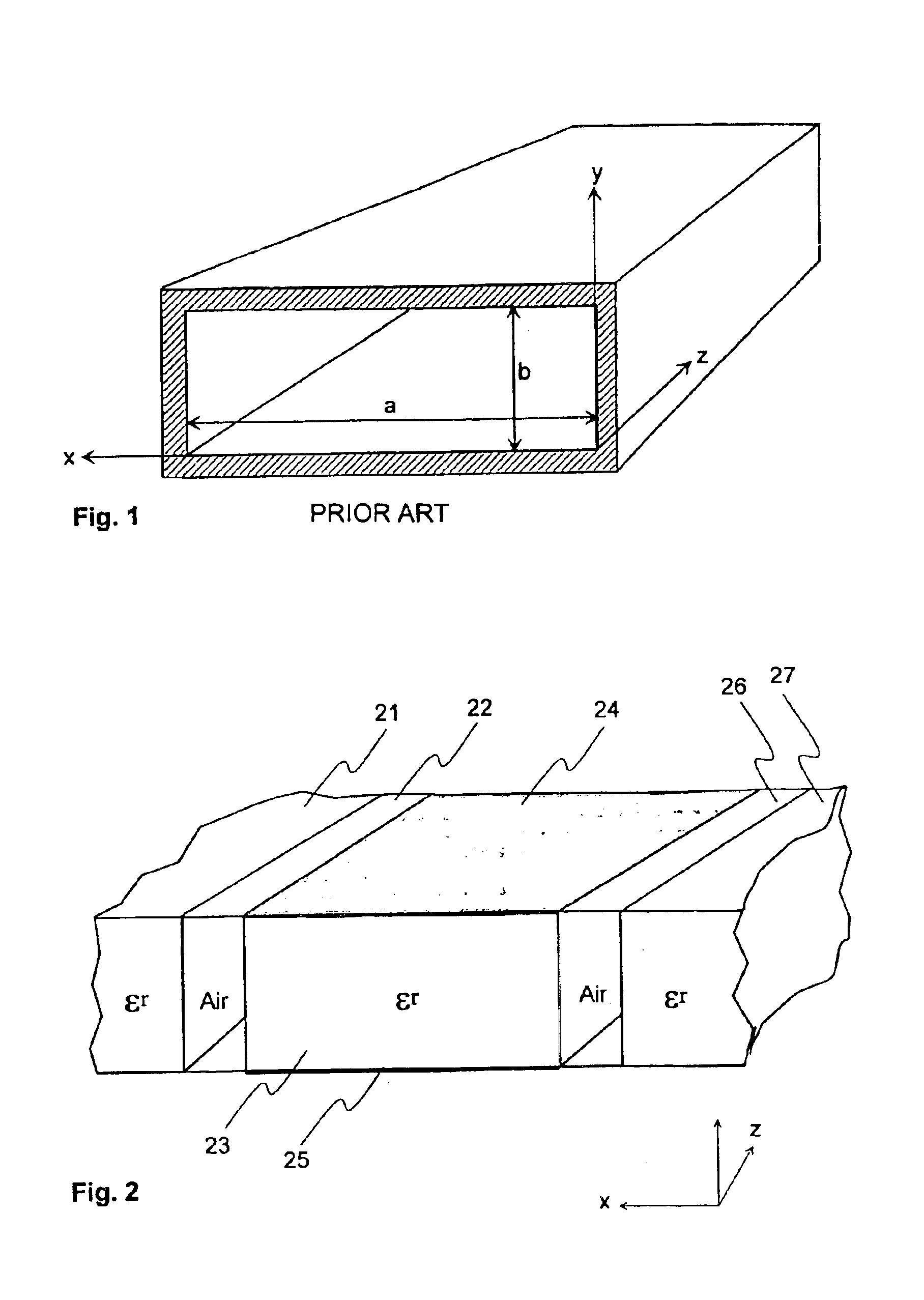Method for creating waveguides in multilayer ceramic structures and a waveguide having a core bounded by air channels
a multi-layer ceramic and waveguide technology, applied in waveguides, electrical equipment, antennas, etc., can solve the problems of large physical size compared to the rest of the circuit unit to be manufactured, increased cost and failure risk, and difficult integration of their manufacture into the manufacturing of the circuit unit as a whol
- Summary
- Abstract
- Description
- Claims
- Application Information
AI Technical Summary
Benefits of technology
Problems solved by technology
Method used
Image
Examples
first embodiment
[0032]FIG. 2 shows an example of a waveguide according to the invention, implemented with the multilayer ceramic technique. The structure shown in FIG. 2 is part of a larger circuit structure implemented with the multilayer ceramic technique, which is not shown in its entirety in the drawing. The waveguide structure is surrounded on both sides by the structures 21 and 27 shown in the drawing, which consist of several green tapes. The permittivity εr of the ceramic material used in them is clearly higher than the permittivity of air, which is of the magnitude 1, as is well known. Other parts of the structure, which are both above and below the waveguide structure shown in the drawing, viewed in the direction of the y-axis, consist mainly of the same ceramic material. The core part 23 of the waveguide consists of the same ceramic material as the rest of the circuit structure. The width of the waveguide in the direction of the x-axis is limited by air-filled cavities 22 and 26 essentia...
second embodiment
[0034]FIG. 3 shows an example of a waveguide according to the invention. The structure shown in FIG. 3 is part of a larger structure implemented with the multilayer ceramic technique, which is not shown in its entirety in the drawing. The waveguide structure is surrounded on both sides by the structures 31 and 37 shown in the drawing, which consist of several green tapes. The permittivity εr of the ceramic material used in them is clearly higher than the permittivity of air, which is of the magnitude 1. Other parts of the structure, which are both above and below the waveguide structure shown in the drawing, viewed in the direction of the y-axis of the drawing, also consist mainly of the same ceramic material. The core part 33 of the waveguide consists of the same ceramic material as the rest of the circuit structure. The width of the waveguide in the direction of the x-axis is limited by two essentially parallel impedance discontinuities, which are formed of via posts 38 and 39 in ...
PUM
| Property | Measurement | Unit |
|---|---|---|
| thick | aaaaa | aaaaa |
| cut-off frequency | aaaaa | aaaaa |
| permittivity εr | aaaaa | aaaaa |
Abstract
Description
Claims
Application Information
 Login to View More
Login to View More - R&D
- Intellectual Property
- Life Sciences
- Materials
- Tech Scout
- Unparalleled Data Quality
- Higher Quality Content
- 60% Fewer Hallucinations
Browse by: Latest US Patents, China's latest patents, Technical Efficacy Thesaurus, Application Domain, Technology Topic, Popular Technical Reports.
© 2025 PatSnap. All rights reserved.Legal|Privacy policy|Modern Slavery Act Transparency Statement|Sitemap|About US| Contact US: help@patsnap.com



